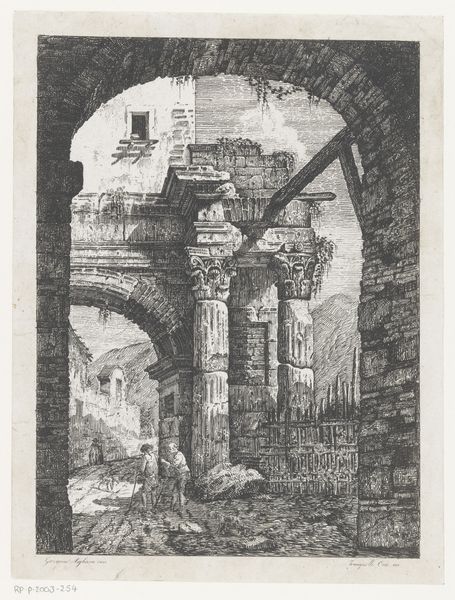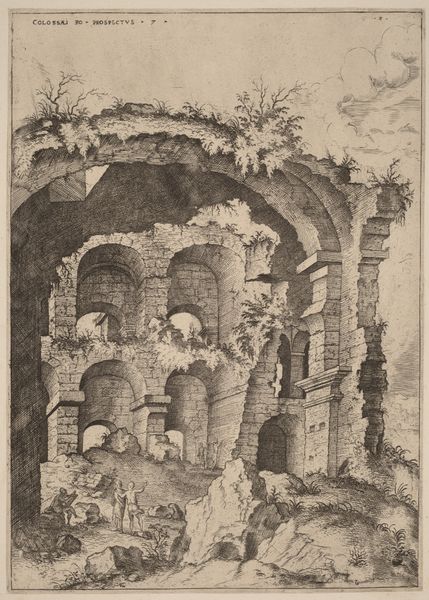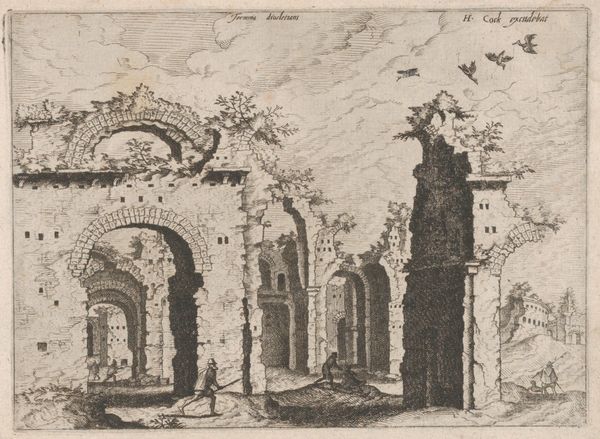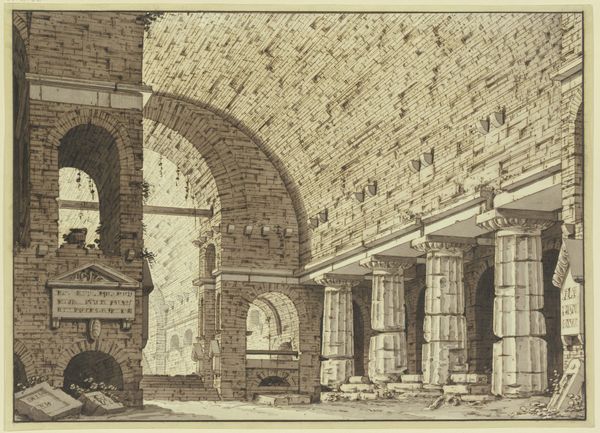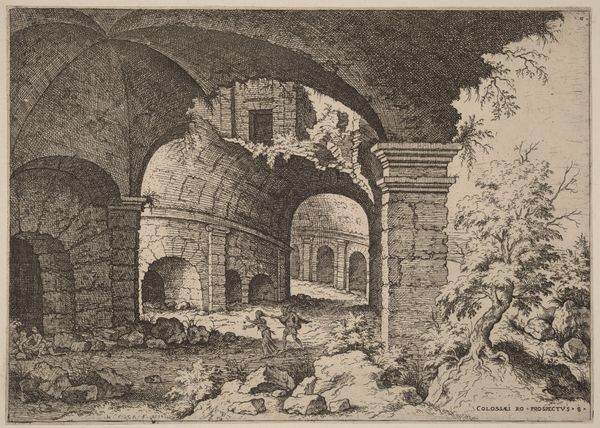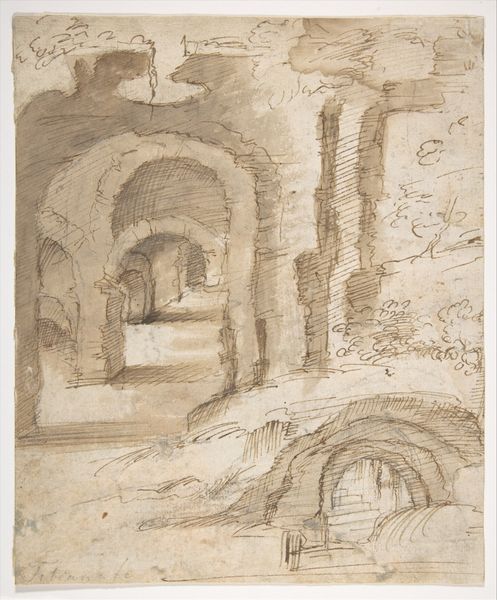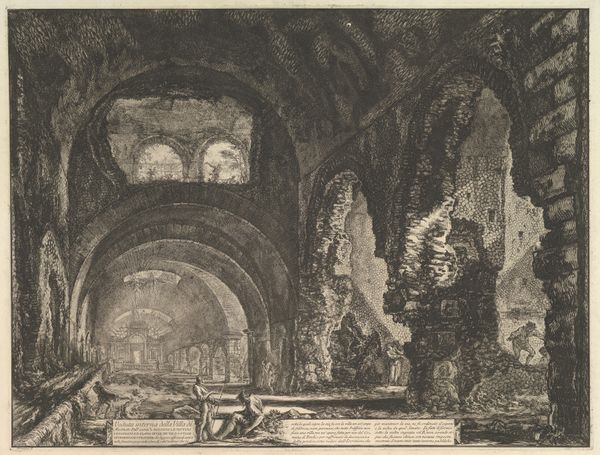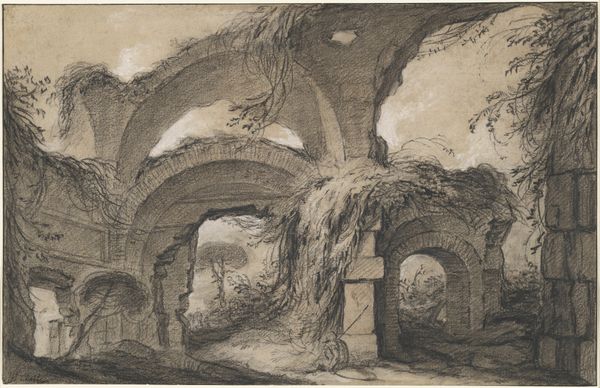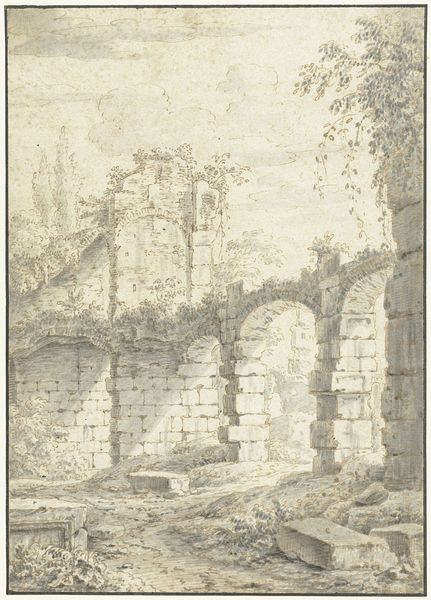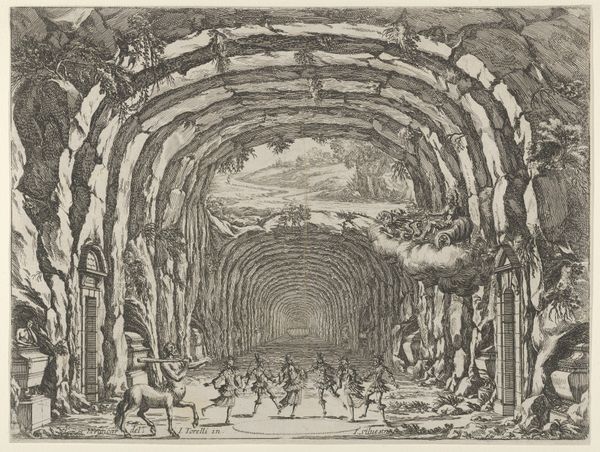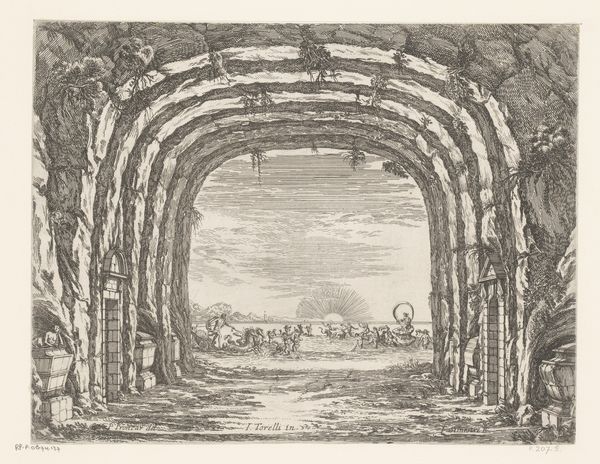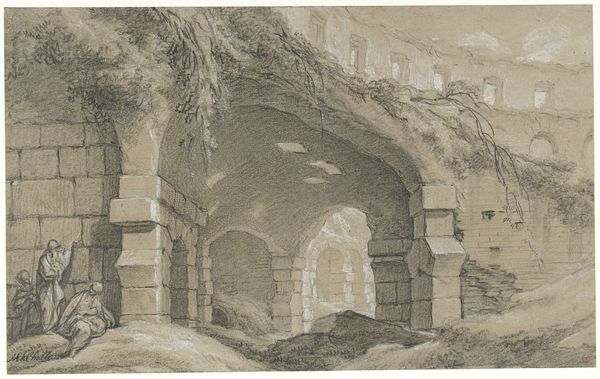
drawing, paper, ink, architecture
#
drawing
#
landscape
#
paper
#
form
#
ink
#
ancient-mediterranean
#
line
#
italian-renaissance
#
architecture
Dimensions: height 222 mm, width 171 mm
Copyright: Rijks Museum: Open Domain
Editor: This is Tobias Verhaecht's "De Clivus Scauri te Rome," created between 1571 and 1590, using ink on paper. It evokes such a strong sense of history and decay, yet the composition, the linear perspective, feels so precise. What layers of meaning do you see in this piece? Curator: I see a poignant commentary on power and its impermanence. The Clivus Scauri was a wealthy district of ancient Rome, but here, Verhaecht renders it as a ruin. The very choice to depict a site associated with the elite—now crumbling—invites us to contemplate the cyclical nature of dominance. How does the medium, ink on paper, influence your perception of this message? Editor: That’s interesting. The ink seems so fragile, and the paper even more so, highlighting that transient quality. So, is Verhaecht critiquing the hubris of those in power during the Renaissance? Curator: Precisely! The Renaissance was obsessed with classical antiquity, but this wasn't merely celebratory. By showing the ruins of Roman power, Verhaecht might be subtly questioning the power structures of his own time, pointing out the inevitable decay that awaits all earthly empires. The lines, though precise, don’t try to disguise the destruction of the place. Editor: That's a very powerful interpretation. I initially just saw it as an interesting landscape sketch, but considering it as a critique of power structures adds a whole new dimension. Curator: And consider the symbolism of the arch – traditionally a symbol of Roman power and triumph. Here, repeated endlessly into the distance, but in ruin. Is it triumph, or an echo of forgotten ambition? Perhaps, also, Verhaecht used this setting to provide a lesson through a not so subtle display of the effects of unchecked ambition. Editor: Wow. I had not thought of that. I will never look at classical ruins the same way again! Thank you. Curator: The beauty of art lies in its capacity to constantly challenge us and broaden our perspective.
Comments
No comments
Be the first to comment and join the conversation on the ultimate creative platform.
